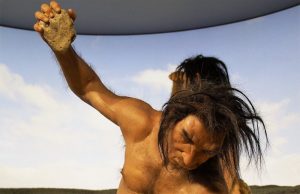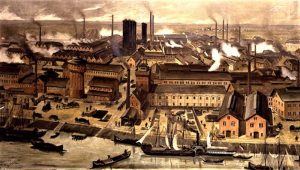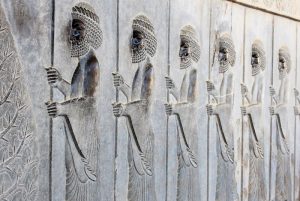Mesolithic
Mesolithic period represents an important advance for humanity in the Stone Age. This Prehistoric period comprises the years between 10,000 B.C., and 6,000 B.C.. After the end of the Ice Age, man had to change his life habits to adapt to the new ecosystem in which he had to survive. For this, he had to leave the caves and begin to develop architecture to create their homes outside the caves, make new tools of stone, bone and wood to feed with the new animals that appeared in their territories and develop their fishing skills.
What is Mesolithic?
The Mesolithic period represents the second stage of the Stone Age, which comprises the years between 10,000 B.C., and 6,000 B.C. The first stage is called Paleolithic (ancient stone), the second Mesolithic (half stone) and the third, the Neolithic (the New stone) where the Metals Age begins.
This climatic change made them pass from gatherers and hunters to producers, and from stationary nomads to sedentary people who were initiated in agricultural and livestock art to give birth to the first civilizations. The territories where the most Mesolithic populations have been identified are located in the Southwest and Northwest of Europe, in countries such as France, Spain, Scandinavian countries, among others.
In the development of science and technology of this period, significant advances were made, for example, the creation of means of transport such as sleds pulled by dogs and canoes to travel along rivers, as well as the creation of the microlith industry, with the construction of hunting and fishing tools such as hooks.
All the architectural, technological, economic and social advances of this period are framed in what scientists call the Mesolithic revolution that will have its peak in the Neolithic or New Stone period.
During this period, the first cemeteries and burials under the Mesolithic dwellings appeared.
Main characteristics
The Mesolithic period has the following characteristics:
- It is a period that marks the end of the ice age and the beginning of a more temperate climate.
- The men of this period change their lifestyles and the first sedentary societies appear.
- Colonies and race differences begin to appear.
- Fishing began to develop as a form of food.
- New tools were created for hunting and fishing, such as hooks, nets and small boats.
- It is divided into two stages: The Epipaleolithic which means above the Paleolithic and the Protoneolithic which means period preceding the Neolithic.
- The first cemeteries are created.
Economy in the Mesolithic
Its diet based on hunting, fishing and fruit gathering, makes its economy a collector, but in the transition from nomad life to sedentary, it will change it from collector to producer, with the emergence and development of agriculture and livestock during the Neolithic period.
On the other hand, Mesolithic period develops the microlithic industry, which is characterized by small tools made of stone, used for hunting and fishing, such as hooks, arrow tips, scrapers and chisels.
Vehicles were also built to transport by land and water. The sledge was invented, which at first was pulled by men and then by dogs; and small wooden canoes to navigate the rivers.
Many prehistoric researchers claim that this period created the economic and social foundations of the Neolithic.
Architecture during Mesolithic period
During the Mesolithic period, open-air huts and the first villages appeared.
Houses were built with trunks and branches, had a single room and were semi-dug into the ground. They buried dead people in cemeteries near villages or under the floor of their houses.
The first Mesolithic populations identified in its initial phase or Epipalaeolithic were:
- Azilian located in France, Cantabria and Asturias.
- Maglemosian located in the north of Europe.
- Ertebølle located in the south of the Scandinavian peninsula).
- Ahrensburg located to the northwest of Europe.
- Asturian located Iberian Peninsula.
Art
As a result of climate change, Mesolithic art manifests itself through skin painting in which battles and acts of war are drawn. It is also said that ceramics began to develop at this stage.
Mesolithic period has a rationalist and conceptual art that makes use of abstract and geometric in its pictorial manifestations.
Among their hunting tools, they developed arrowheads made of bone and wood to kill their prey without damaging their skins.
How to cite this article?
Briceño V., Gabriela. (2019). Mesolithic. Recovered on 24 February, 2024, de Euston96: https://www.euston96.com/en/mesolithic/










